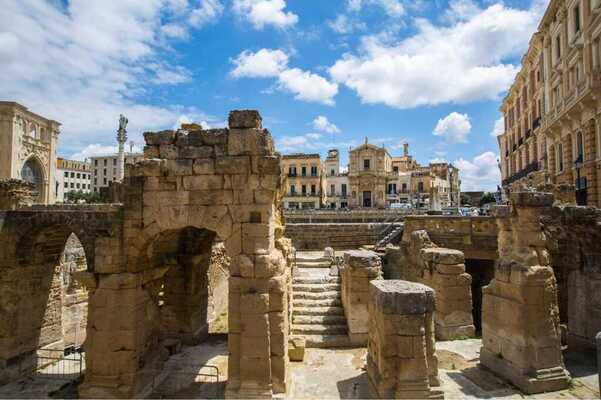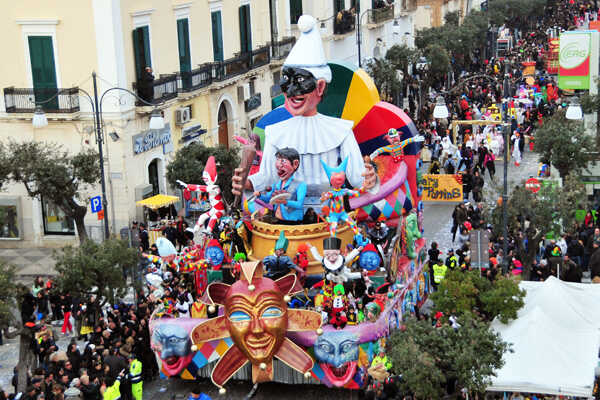Salento craftsmanship
In addition to the crystalline sea, the intact landscape, the characteristic views of the coastal towns and the delicious cuisine, Salento boasts an artisanal production that contains the knowledge of the “masters” of the past, of those who made their art a reason for living. Craftsmanship is a global phenomenon, a subject of study, an economic, cultural and social fact; he is capable of retracing the gestures of popular art, but he is also able to re-propose works belonging to historical periods of high artistic value. Salento craftsmanship has been able to keep its traditions alive despite the advent of modernity, managing to preserve its fundamental traits and mix with innovation.
In the contemporary South there is a desire to rediscover the ancient world, the crafts of our ancestors and the old productions made and sold in a small shop in the town square, the fruit of the fervent imagination and golden hands of some master who, assisted by his “disciple”, he creates an art form outside of stereotypes, offering high quality products of inestimable beauty and value, a mirror of popular art.

Papier-mâché: symbol of Salento craftsmanship
The symbol of Salento craftsmanship, particularly in Lecce, is papier-mâché, born as a religious commitment in an environment poised between the sacred and the profane. The first traces of this activity date back to the seventeenth century, but we will have to wait until the nineteenth century to see the full flowering of this art born in the back shops of some Lecce barbers, of those more modest people, who did their best to shape straw and rags by covering them with paper, thus creating the famous statues and sacred figures that we find in many churches in Salento. Despite everything, the “poor masters” had found many clients, in particular among:
- the clergy, who during the Lutheran heresy needed to bring the faithful closer together through the proposal of Madonnas, Saints and Christs capable of touching the souls of the devotees
- the nobility, who through these commissions had secured their place in Paradise.
Centuries have passed, but the techniques have remained unchanged. The works still retain the classic forms of sacred statuettes but even more frequent is the representation of nativity figures of various sizes such as, for example, those exhibited at the famous Santa Lucia fair in Lecce. The baroque city represents the center of Salento with the highest percentage of master paper mill makers.
Terracotta
Another typical production of Salento craftsmanship is the processing of terracotta, typical of those towns located in the areas where clay is extracted. The peoples who contributed to the spread of this tradition were the Daunians and the Messapians. Terracotta manufacturing was widespread throughout Salento: plates, bowls, pots and vases were produced from Nardò to Gallipoli, from Cutrofiano (the “Municipal Museum of Ceramics” was inaugurated in 1985) up to Lucugnano di Tricase in Lower Salento, the latter are still important production centers. San Pietro in Lama was famous for the production of “imbreci” (roof tiles).
The workmanship is not limited to the production of household objects, but also of ironic toys such as whistles, bells or the same puppets that continue to animate our nativity scenes. The process followed a mixture of water and clay which was worked on the wheel, then exposed to the sun and finally fired at around 900° C: the resulting yellowish or brick-red artefacts were created due to the presence of iron oxide.
Once “baked”, the masterpieces of the “cutimari” (this is what terracotta artists are called) take various forms including the products mentioned above.
Lecce stone

Lecce stone cannot be missing from this list, a yellowish limestone rock that preserves marine and terrestrial fossils within it. It is renowned for its malleability dictated by the presence of clay, which is why it is easily mouldable, soft when cut by the chisel.
Precisely this material, appreciated in the artistic field, has achieved international esteem thanks to the local craftsmanship which is the basis of Lecce Baroque. This precious stone, in fact, sprinkles the facades of the main monuments of the capital: the Palazzo dei Celestini and the adjacent Church of Santa Croce, the Church of Santa Chiara and the Duomo are some examples.
The strong presence in the area of quarries from which the raw material is extracted clarifies the choice to use this stone. In this regard, in Cursi, one of the main municipalities where Lecce stone is extracted, the Ecomuseum was inaugurated in 2000. For those who want to try their hand at this art or even just see with their own eyes what lies behind such splendor, the Agrintour Association organizes tourist-educational itineraries: from September to November and from March to May, the appointment is with the workshops focused on Salento craftsmanship and in particular on the processing of Lecce stone in order to present the territories and bring young people closer to an often forgotten world that could offer interesting satisfactions in starting future activities.
Other typical productions of Salento craftsmanship
- Among the ancient crafts in Salento, we find the production of fabrics and embroidery, as well as excellently made lace. This, more than a craft, is an art handed down from mother to daughter since in ancient times these creations were conceived for domestic use only, as they were intended for preparing the trousseau of “marriageable daughters”.
- In the Capo di Leuca area and precisely in Acquarica, marshy areas and reed thickets provide the raw material for the processing of rush or wicker which a few old craftsmen still weave to produce baskets and shopping bags.
- In ancient times, copper was worked to make quatare and quatarotti (copper pots and cauldrons used in the kitchen), bracieri e scarfalietti (ancient containers with a long handle in which the embers were placed which allowed the beds to be warmed in winter) that could not be missing in every home. Today, certainly replaced by modern steel pans and more advanced heating methods, we find them reproduced for decorative purposes only in some shops in Capo di Leuca.
- The art of wrought iron, however, has been known nationally since the 16th and 17th centuries for all the decorations of the portals of the palaces and churches of Salento. Even today the working tools are the same: the anvil, the forge that makes the iron soft and malleable, hammers of different shapes that inflict particular scratches on the iron, managing to shape it into the most varied lines. Thus, bed headboards, lamps, andirons, railings are created through the assembly of several pieces, then painted in iron black, which few today still carry out through nailing (replaced by the simpler and more hasty welding).

Lecce: la “Firenze del Sud”
Un irresistibile connubio di storia e magia, palazzi e chiese, monasteri e conventi vi accoglieranno a Lecce anche detta “Firenza del Sud“ per via del suo stile barocco.

Il carnevale in Salento: arte, cultura e folklore
La penisola salentina, meravigliosa terra fra due mari, come ogni anno si prepara a festeggiare il suo caratteristico Carnevale, una festa in cui si incrociano arte, incontri interculturali e gemellaggi con diversi paesi e che danno vita ad eventi caratterizzati da folklore intrecciato alla religione.

